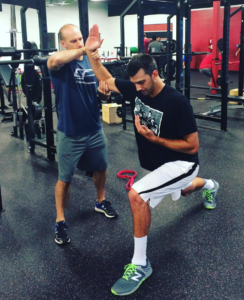
4 Reasons You MUST Understand Corrective Exercise and Post-Rehab Training
Over the years, I’ve probably become best-known for my writing, consulting, and presenting in the corrective exercise field. It’s become a great niche for me; I get to help people who may be frustrated with injuries, bad posture, or movement limitations that prevent them from doing the things they enjoy. And, I’m able to have fun in the process and make a good living while doing so.
With that in mind, I wanted to devote today’s piece to my top four reasons that you, too, should make a dedicated effort to become knowledgeable in the world of corrective exercise. The timing is quite fitting, as our Functional Stability Training series (which provides thorough insights into the corrective exercise field for rehabilitation specialists and fitness professionals alike) is on sale for 20% off through tonight (Sunday) at midnight.
Anyway, without further ado, here are my top 4 reasons you ought to get involved in this component of the fitness industry.
1. Health care quality and quantity are changing all over the world.
The push toward universal health care has dramatically increased the need for qualified people to fill the gap between “healthy” and “injured” populations. When more people have health insurance, but there aren’t any more providers, not everyone can get access to what they need – and certainly not nearly as quickly. Two stories come to mind in this regard:
a. A guy I know in Canada actually waited nine days to have a ruptured patellar tendon repaired.
b. An online consulting client in England who sought me out after a hip surgery reported that he had to wait three months for the hip surgery following the point at which they concluded that physical therapy wasn’t going to get the job done.
While the push for universal health care in the United States is still being sorted out (and it’s certainly not a topic to be covered in this blog, as I have no interest in taking this down political lines), the truth is that we’ve seen a “crack-down” on what insurance companies afford folks in terms of physical therapy visits for a given condition. Very simply, physical therapists rarely have the time to do everything they want to do to get people truly healthy, so folks often have to just settle for “asymptomatic.”
In the U.S. and abroad, there is a huge need for qualified personal trainers and strength and conditioning coaches to step in and take the baton from physical therapists in the post-rehab setting to help improve patient outcomes. And, there is certainly a big need for these fitness professionals to step in and help people who may move terribly, but not have symptoms…yet.
2. New expertise enables a fitness professional to tap into a new market and carve out a niche.
Roughly 85% of our clients at Cressey Sports Performance are baseball players; it’s a population we’ve really gone out of our way to understand for years now. Specific to the current discussion, baseball players have the most extreme collection of upper extremity injuries you’ll encounter (on top of lower back, oblique, hip, and knee issues) – so demand is never lacking for our services.
This just one sport, though. Almost every golfer experiences lower back pain at some point. Hockey players have load of hip issues. Swimmers have so much laxity that their shoulders are always banged up. The opportunities to carve out a niche in a specific sport or population are endless – but you have to know your stuff first.
3. Everybody is injured – whether they know it or not.
I’ve written quite a bit previously about how absolutely everyone you encounter has some kind of structural abnormality on diagnostic imaging. This applies to lower backs, shoulders, knees, and every other joint you’ll encounter in your professional career.
The importance message to take from this knowledge is that even though everyone is “injured,” not everyone is symptomatic. Rather, the ones who hurt are those who have poor mobility, stability, and tissue quality. They’re in pain because they simply don’t move well.
Taking away someone’s pain is a tremendous way to win them over for life – and I can assure you that keeping them out of pain when they know they should be in pain isn’t far behind on the appreciation scale.
4. Structural abnormalities are becoming a part of normal physical development.
I work with a lot of 10-18 year-old athletes, and I’m constantly amazed at how we are “de-evolving.” Kids’ movement quality is worse than every nowadays, as they’re sitting too much and playing too little. And, their yearly athletic calendars lack variety because of early sports specialization.
The end result is that our society has created an epidemic of injuries (e.g., ulnar collateral ligament tears in pitchers, ACL ruptures in soccer/basketball players) and conditions (e.g., femoroacetabular impingement, atrocious ankle mobility) that were much less common in the past. Getting involved with corrective exercise education is a way to not only help understand why this is happening, but also to manage it and hopefully prevent it from continuing.
I’m speaking very broadly with respect to the need for significant corrective exercise education in order to make a difference in this industry, but the truth is that it is a subject that warrants a ton of detail. Fortunately, Mike Reinold and I delve into this topic in great detail in our Functional Stability Training resources: Core, Upper Body, Lower Body, and Optimizing Movement. You can learn more – and save 20% through the end of the day today – at www.FunctionStability.com.






